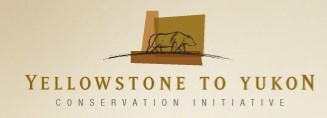A report from the Wildlife Conservation Society has recommended that there is a need for more provincial parks along the Eastern Slopes of southwest Alberta.
The report, entitled Protecting and Connecting Headwater Havens — written by carnivore conservation biologist John Weaver — examined the conservation values, along with the needs of six vulnerable fish and wildlife species within 6,500 square kilometres, from Kananaskis Country to the Canada/U.S. border and east to Highway 22.
The results of Weaver’s study suggest protecting 40 per cent of the study area from logging, oil and gas activity, and motorized recreation to ensure recovery of the species.
For Wendy Francis, program director of the Yellowstone to Yukon Conservation Initiative (Y2Y), the results from Weaver’s report verifies what area conservationists have been focusing on — a land-use framework that will protect headwaters and wildlife.
By designating certain areas as provincial parkland, Francis said headwaters would be protected — not just for fish and wildlife, but for people too.
“For a long time, this is what conservationists have been saying,” said Francis. “But (Weaver’s) report gives a thorough, scientific look at the area. This report can provide very important input into the South Saskatchewan Regional Plan — this gives an idea of how the plan should look.
The Alberta government is in the final stages of drafting the South Saskatchewan Regional Plan, which will regulate land use within the region. The area stretches more than 80,000 square kilometres from north of Calgary to the Canada-United States border, and from the Rocky Mountains to the Alberta-Saskatchewan boundary.
Unlike Weaver’s report, the regional plan will take a much broader look at the landscape and will consider all plant and wildlife in the area. Francis said the plan covers “all headwaters that arise from Banff and travel south to the border.”
Various working groups are currently reviewing the draft of the South Saskatchewan Regional Plan, said Amie Taubert, a spokesperson for the Land Use Secretariat with Alberta Environment and Sustainable Resource Development (ESRD).
While she couldn’t release details about the plan, she said that the Castle River watershed — one of the main areas of concern for the Y2Y group, according to Francis — is being addressed in the plan.
“The Castle River watershed has one of the highest conservation values,” Francis explained. “It’s an area where we can protect the least amount of land and get the biggest benefits long term.”
The draft of the South Saskatchewan Regional Plan will be released this fall.




